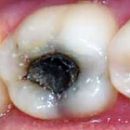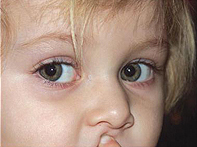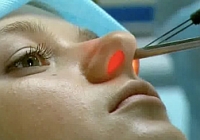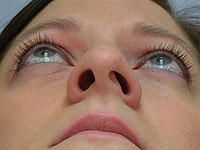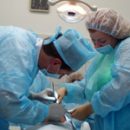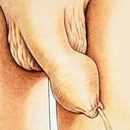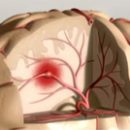Hoping abnormal sinks are the most frequent innate defect, which is accompanied by psychological discomfort. In most cases, the surpassing operation is carried out in preschool age.
Content
Hatching ear sinks are often found quite often and are often accompanied by psychological discomfort, so the correction should be carried out in preschool age when the main formation of ear shell has already been completed.
Surgery began to be used to correct the congenital defects of the ears in the middle of the 19th century, when the Diffenbach described the operation on the correction of burrows by launching the outflowed ear shells to the skull.
Functions of ear shell
The outdoor ear begins to grow in the third month of pregnancy, and on the sixth, the outer edge of the ear turns inside and the internal folds develop. Deformation, including hopping ears, clearly visible at birth.
In recent years, it was found that immediately after birth, the ears can be changed without surgical intervention. The protruding or deformed ears of the newborn can be tiered in such a way that they will take another form, and the cartilage stabilizes in the desired position.
Functions of ear shell:
- Aesthetic
- Acoustic
- Protective (from harmful external influences)
Congenital deformation of ear shell - Lopowing
All deformities of the auricle are divided into congenital and acquired. Congenital deformations - burrows - most often arises due to the increase in the actual shell, but the form of ear cartilage is distorted. A large number of operations were proposed, the essence of which is the removal (pass), immersion (Pitanga, Rablo, Andreeva), wrapping part of cartilage, numerous notches, to change curvature due to changes in voltage lines.
Indications and Preparation for Lopowing Correction Operation
The indication is most often the desire of the patient and parents, since functional disorders in the absence or deformation of the ear shell are rare.
Contraindications for surgery:
- General - some concomitant diseases
- Waiting for the overall, denial of the possibility of complications
 The most important part of the preparation for the operation is full information and realistic expectations in relation to the result, possible risk and the circumstances of the postoperative period.
The most important part of the preparation for the operation is full information and realistic expectations in relation to the result, possible risk and the circumstances of the postoperative period.
If the patient smokes, it is very important to stop at least 1-2 weeks before and after the operation. Smoking reduces blood flow to the skin and can interfere with the healing of the Russian Academy of Sciences (the risk of complications for smoking patients at least 10 times higher).
Do not use alcohol. Its excess contributes to bleeding. Be sure to inform the doctor about regular reception of any medicines, especially aspirin and other blood clotting.
Do not forget to mention the concomitant diseases that may result in complications after surgery - uncontrolled blood pressure, blood clotting problems, a tendency to form coarse excess scars.
Before the operation, make photos in several projections. To determine the missing elements of the ear, a gonzalles-ox technique is applied when the ear presses the head to the head, which exits the missing folds on the outer surface, which must be created during the operation.
Lopowing Operation
Operation is carried out under local anesthesia. One ear sink requires up to 10 ml of anesthetic (lidocaine, for example). Adrenaline is added to it to reduce bleeding. Marking is not applied by all surgeons. During lockpoint, all manipulations are carried out on the back surface of the ear shell. Usually excreted excess (formed after the abnormal shell) of the skin.
Complications of operation:
- Oboshurgical (bleeding, suppuration)
- Inflammation of cartilage (leads to his death and wrinkling of ear shell - it is extremely rare)
- Recurney - requires a re-operation
- Hypertrophic and keloid scars arise due to the individual features of the tissue reaction on the injury
Each deformation of the auricle requires an individual approach. Properly conducted operation with a large probability guarantees a good result.

